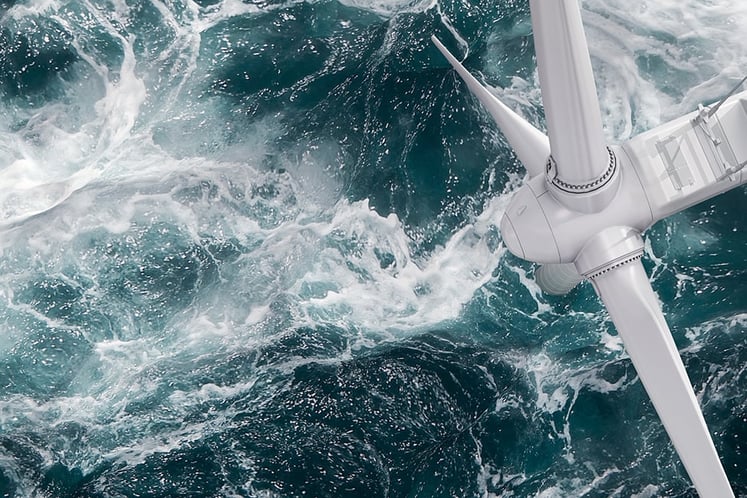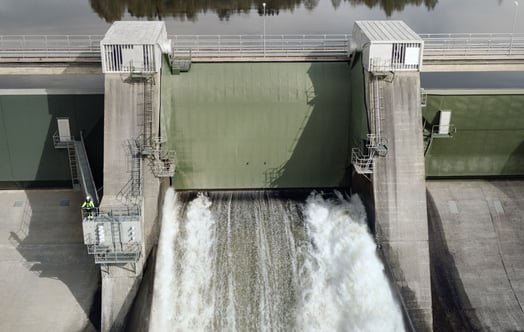In northern Germany, Vattenfall is proving that farmland can produce both food and clean energy. As one of the largest Agri-PV project in Europe to date, it integrates solar panels with agriculture, boosting renewable energy production while preserving farmland for crops and livestock.
 Picture:Chicken in a solar farm. AI generated. Adobe Stock.
Picture:Chicken in a solar farm. AI generated. Adobe Stock.
In the village of Tützpatz in northeast Germany, home to fewer than 600 residents, Vattenfall is constructing a vast ground-mounted solar park. Spanning 93 hectares – roughly the size of 130 football fields – the site will feature nearly 150,000 solar modules with a total output of around 80 MW, spread across three distinct areas. What sets this project apart is that it’s not just a conventional solar park, but an innovative agri-photovoltaic (Agri-PV) plant.
Previously dedicated solely to agriculture, this land is now used for both farming and energy production simultaneously.
“In Tützpatz, we’re integrating agriculture with renewable energy generation on a scale never seen before,” says Claus Wattendrup, Head of Solar at Vattenfall. “This project represents true pioneering work. We want to demonstrate that sustainable farming and energy production can complement each other perfectly. With the Tützpatz plant, we are advancing this young technology to a commercial level.”
The concept is already being tested on a smaller scale with a pilot project in the Netherlands, which, at 0.7 MWp, is much more modest in size compared to Tützpatz. The aim of this pilot project "Symbizon" is to discover the optimal symbiosis between arable farming and solar panels. During this pilot, Vattenfall works together with ERF/HEMUS an agricultural organization, AERES an agricultural university of applied sciences, TNO an independent research organization and RVB the largest Dutch governmental landowner. In this research project the impact of shade on a variety of widely used open field crops will be monitored for multiple years. Next to that the soil condition, electricity yield, biodiversity and optimal tracking algorithm are investigated. Thus, maximizing the learning potential for future Agri-PV projects.
Coexistence is the future
Critics of ground-mounted photovoltaic systems often argue that they take up valuable farmland, but this concern doesn’t apply to Agri-PV systems. In these installations, agriculture and energy production coexist harmoniously, eliminating any competition for land. Agri-PV increases land efficiency and enables the expansion of PV output while at the same time preserving fertile farmland for agriculture. Furthermore, it provides an additional source of income for farmers. This is likely one reason why the residents of Tützpatz have warmly embraced the large-scale project. Mayor Roland Schulz is proud that his small community is now associated with the largest Agri-PV project in Germany.
The three sections of the Tützpatz site will serve different purposes. A significant portion of "Tützpatz 1" will be used for poultry farming, potentially housing up to 15,000 chickens. The areas designated for the chickens are easily distinguishable, as the solar modules are mounted at a steeper angle and higher elevation than conventional rows.
“The steeper angle prevents the chickens from flying onto the modules,” explains project manager Murat Özden. To ensure the chickens remain in their designated areas, these sections are fenced off, separating them from the adjacent areas with flatter module rows.
The panels follow the sun
In the other two sections of the Tützpatz site, arable farming will continue. To enable this between the rows of solar modules, the Vattenfall experts have opted for so-called tracker systems. The solar panels are mounted on an axis, allowing them to tilt from east to west, following the sun’s path throughout the day. The same approach is being tested in the Dutch Symbizon project where the modules can be set to an very steep (up to 60 degrees) position during harvest and cultivation, allowing large agricultural machines to manoeuvre in between the rows.
“If the farmer needs more space to work the land with machinery, he can tilt the panels as needed,” explains Murat Özden.
The somewhat more complicated cultivation of the fields could pay off for the farmer in the form of higher yields. Early pilot projects involving the cultivation of winter wheat and potatoes have shown that Agri-PV can actually lead to higher crop yields in particularly sunny and dry years, as the PV modules provide protection. Initial trials also suggest that native vegetables like potatoes, cucumbers, and asparagus could be well-suited for cultivation under Agri-PV systems.
Facts about the Agri-PV project in Tützpatz
· Total installed capacity: 79 MW (peak)
· Total area: approx. 93 ha
· Modules: bifacial modules, elevated / single-axis tracker system
· Planned agricultural use: chicken farming, arable farming
· The solar power is marketed via a power purchase agreement (PPA)
· Tützpatz is being built without state subsidies

Subscribe to the newsletter THE EDIT
THE EDIT is Vattenfall's new monthly newsletter. Each issue highlights a new burning issue from the world of sustainable energy and fossil freedom.



